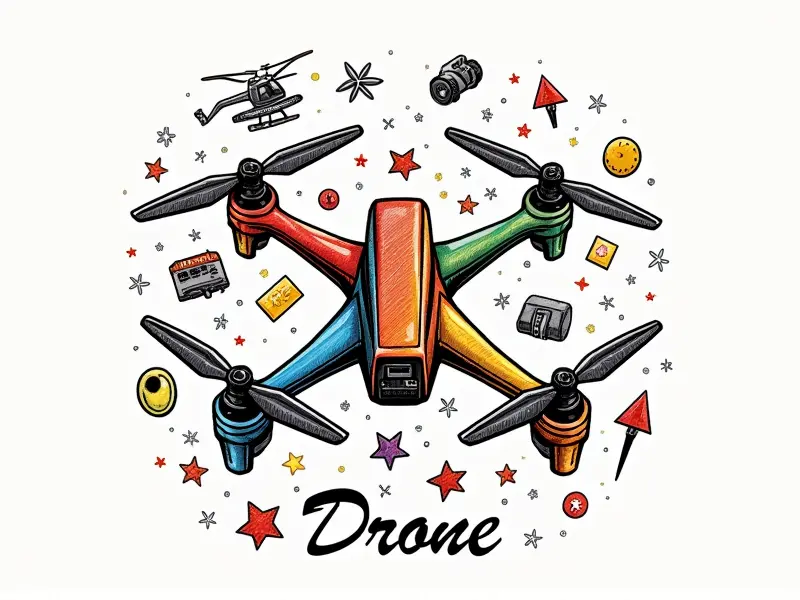What is gimbal in drones?

Understanding Drone Gimbal Basics
A gimbal is a crucial component of modern drones, designed to stabilize the camera and ensure smooth video footage or high-quality photos. This mechanical device consists of multiple rotating joints that allow for movement along different axes (pitch, roll, yaw) while maintaining stability.
Key Functions of Drone Gimbals
- Stabilization: Reduces vibrations and shakes caused by wind or drone movement.
- Smoother Shots: Enables smooth panning, tilting, and rotating movements for professional-looking footage.
- Precise Control: Allows for accurate camera positioning and framing of shots.
Benefits of Using Gimbal on Drones
The inclusion of a gimbal in drones offers numerous advantages, enhancing the overall performance and versatility of aerial photography and videography. Here are some key benefits:
Improved Image Quality
A stable camera platform ensures that images remain sharp and clear, even during high-speed maneuvers or windy conditions.
Enhanced Cinematographic Capabilities
Gimbals enable the creation of dynamic shots with smooth transitions and fluid movements, making them indispensable for filmmakers.
Types of Drone Gimbals Explained
Drones come equipped with various types of gimbals, each designed to cater to specific needs:
Two-Axis Gimbal
This type stabilizes the camera on two axes (pitch and roll), providing basic stabilization for still shots.
Three-Axis Gimbal
The most common type, offering full stability across pitch, yaw, and roll axes. Ideal for video recording and high-motion photography.
How to Choose the Right Drone Gimbal
Selecting the appropriate gimbal depends on your intended use case:
- Type of Photography/Videography: Action shots, cinematic videos, or still images?
- Budget Constraints: More expensive gimbals offer advanced features but come at a higher cost.
- Degree of Control Required: Basic stabilization vs. precise camera control.
Importance of Gimbal for Drone Photography
The gimbal plays an essential role in achieving professional-grade photos and videos from drones, ensuring that every shot is crisp and clear despite environmental challenges.
Stability During Flight
A well-calibrated gimbal keeps the camera steady even during turbulent flights or rapid movements.
Improved Aerial Perspective
Gimbals allow for dynamic framing adjustments, enabling photographers to capture unique angles and perspectives from above.
The Role of Gimbal in Drones Explained
The gimbal is the heart of a drone's camera stabilization system. It works by continuously adjusting its position to counteract external forces such as wind gusts or sudden movements, ensuring that the camera remains level and stable at all times.
How Does it Work?
- Sensors: Detect orientation changes.
- Motors: Adjust gimbal position to maintain stability.
- Software Integration: Fine-tunes adjustments for optimal performance.
Why Drones Need a Gimbal Stabilizer
A gimbal stabilizer is crucial for drones as it compensates for the inherent instability caused by flight dynamics and environmental factors, ensuring that captured footage remains steady and professional-grade.
Environmental Factors
- Wind: Can cause significant camera shake without a gimbal.
- Temperature Fluctuations: Affect drone performance; gimbals help maintain stability.
Mastering Drone Gimbals for Stability
To get the most out of your drone's gimbal, it’s important to understand how to operate and calibrate it effectively:
Calibration Process
- Initial Setup: Follow manufacturer instructions carefully.
- Frequent Checks: Ensure accuracy over time with regular recalibrations.
Top Tips for Drone Gimbal Use
Here are some expert tips to enhance your drone gimbal usage and improve the quality of your aerial shots:
- Leverage Auto-Adjust Features: Utilize automatic adjustments for smoother footage.
- Practice Manual Control: For precise framing, learn manual controls.
Maintaining Your Drone Gimbal
To prolong the life and performance of your drone gimbal, regular maintenance is crucial. Here are some tips:
- Clean Regularly: Remove dust and debris to prevent mechanical issues.
- Check Lubrication: Ensure moving parts remain well-lubricated for smooth operation.
Gimbal vs Non-Gimbal Drones
The choice between a gimbal-equipped drone and one without hinges on your specific needs:
- Stability: Gimbal drones offer superior stability, crucial for high-quality footage.
- Budget: Non-gimbal models are generally more affordable but lack stabilization features.
Conclusion
The gimbal is a cornerstone of modern drone technology, providing essential stability and control that elevate the quality of aerial photography and videography. Understanding its functions, benefits, and maintenance can significantly enhance your drone operation experience, making it an indispensable tool for enthusiasts and professionals alike.

